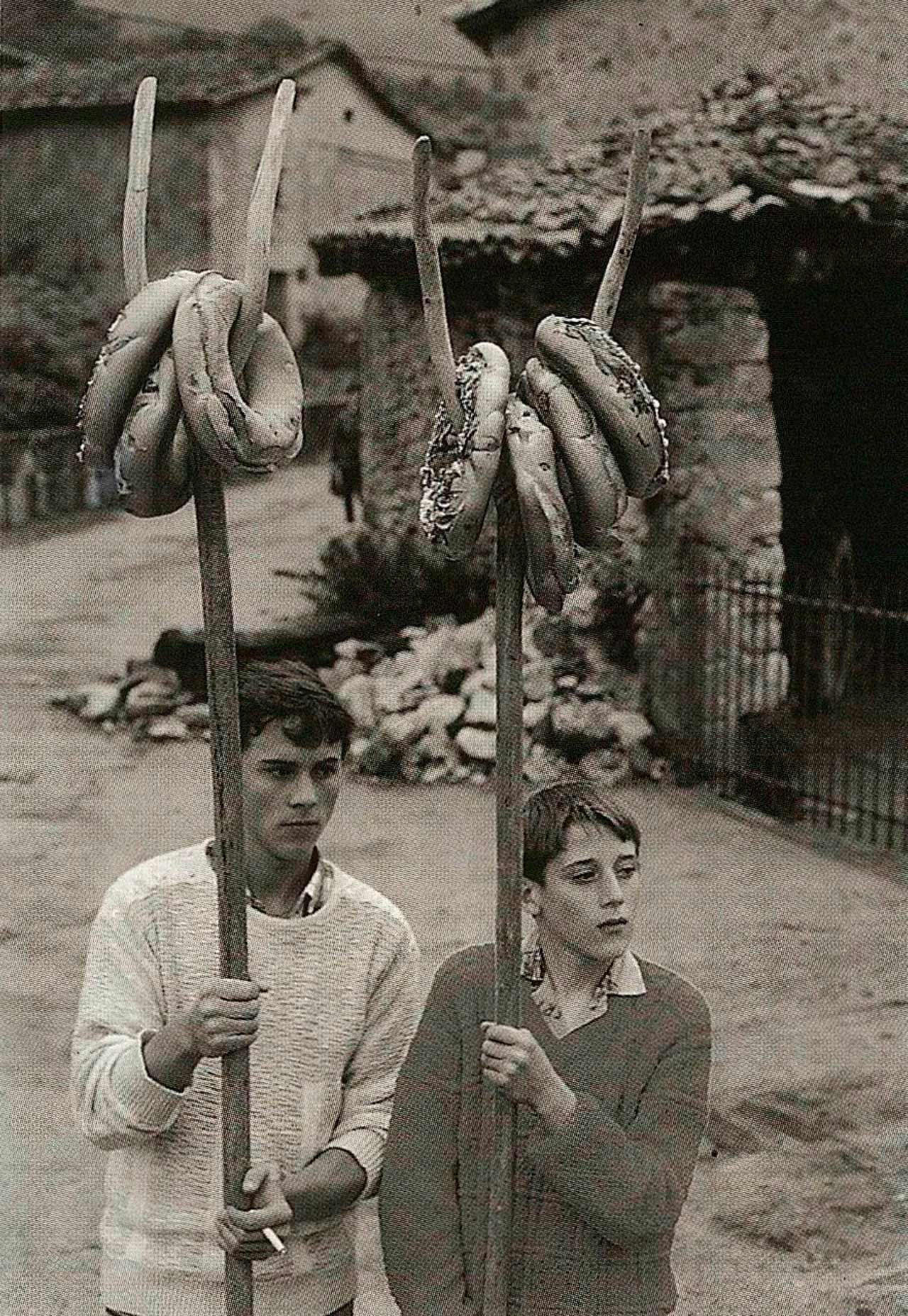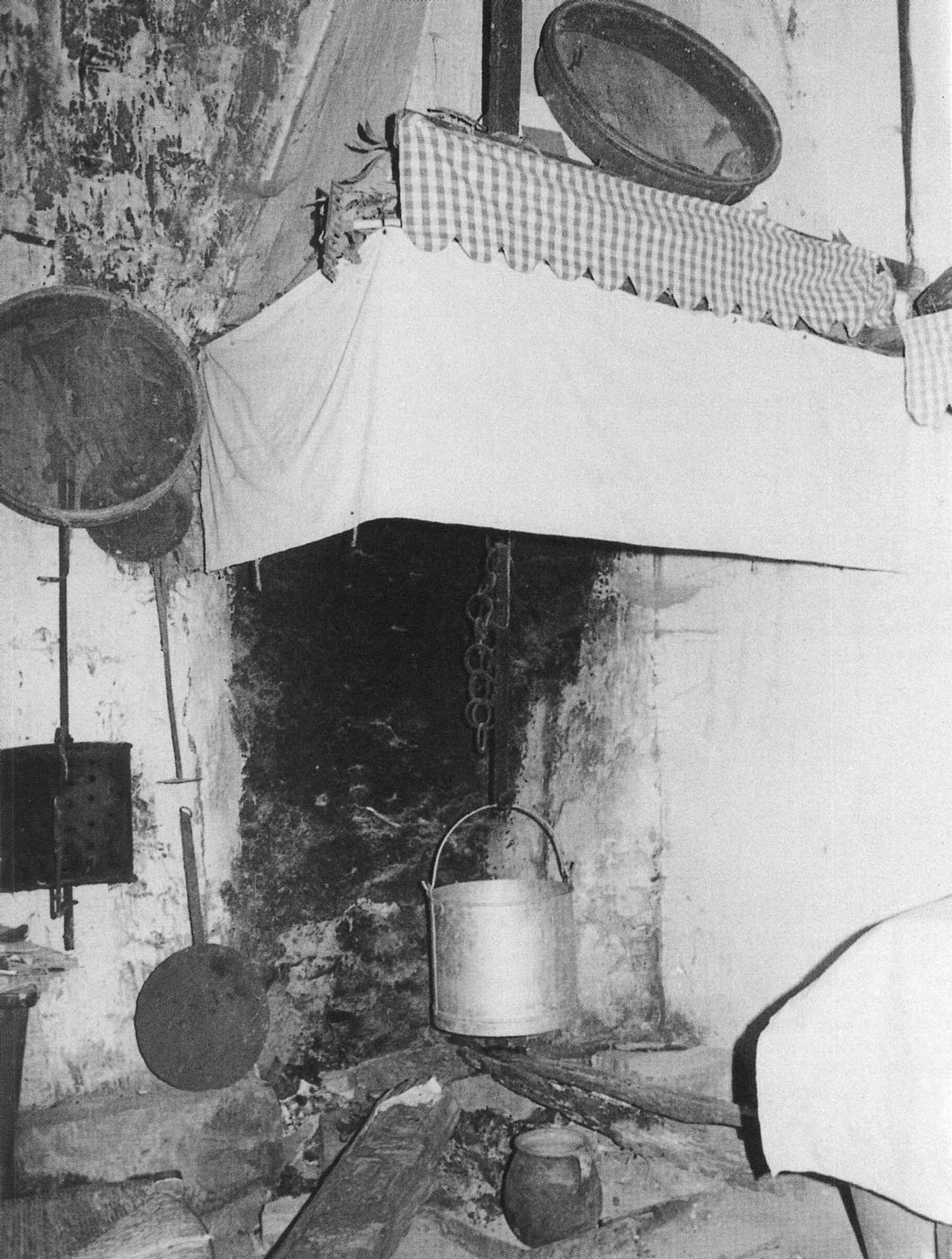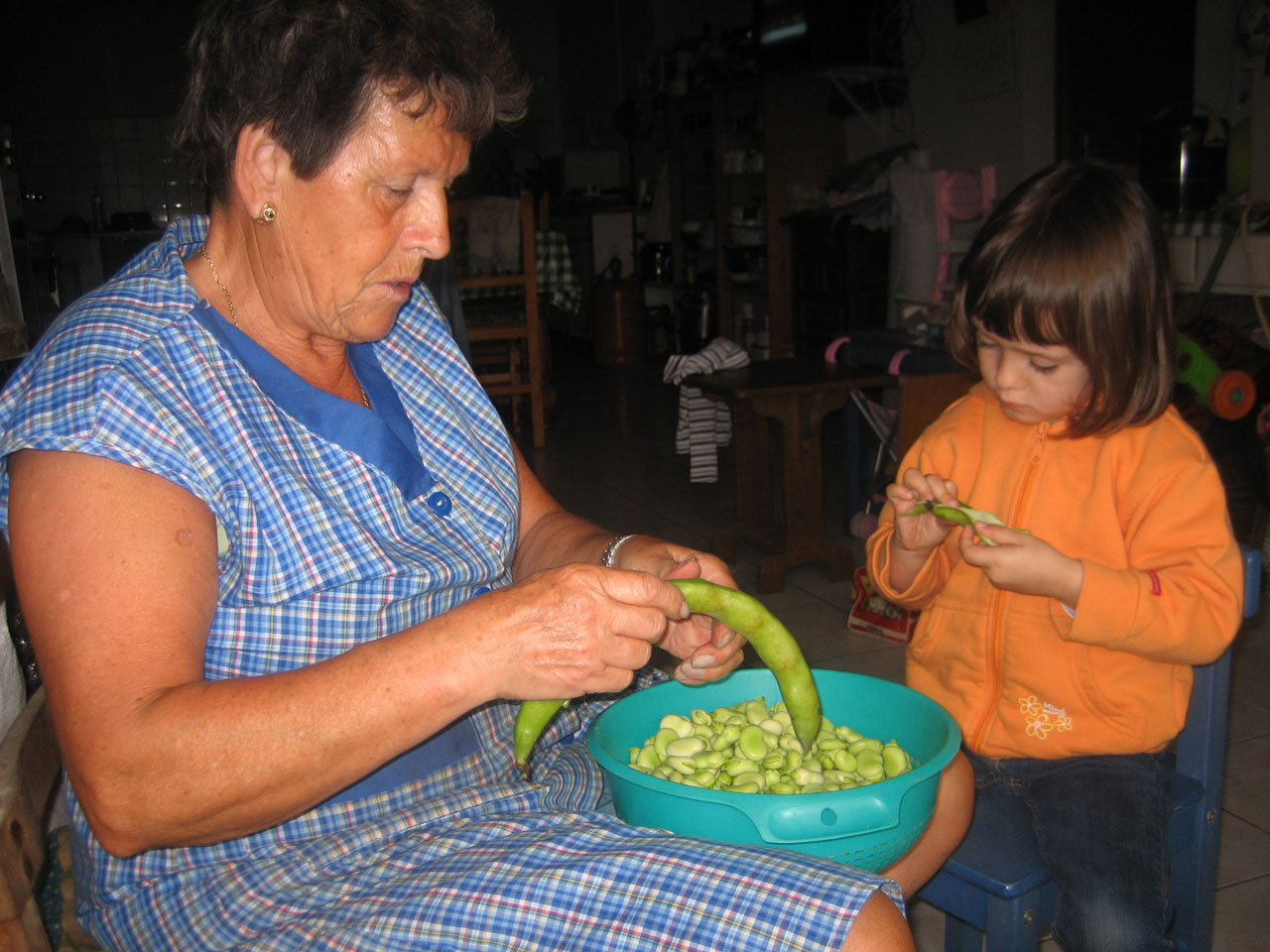Diferencia entre revisiones de «Alimentacion domestica en vasconia/en»
De Atlas Etnográfico de Vasconia
| Línea 1: | Línea 1: | ||
<languages></languages> | <languages></languages> | ||
| + | <div class="mw-translate-fuzzy"> | ||
[[File:ALIMENTACION_PORTADA.jpg|center|650px|Erraria, hornada de pan. Caserío Ariztimuño, 1995. Oñati (G). Fuente: Archivo Fotográfico Labayru. Foto Antxon Aguirre.]] | [[File:ALIMENTACION_PORTADA.jpg|center|650px|Erraria, hornada de pan. Caserío Ariztimuño, 1995. Oñati (G). Fuente: Archivo Fotográfico Labayru. Foto Antxon Aguirre.]] | ||
| Línea 25: | Línea 26: | ||
====[/atlas/alimentacion/Merienda-principios-del-siglo-20.jpg|Snack break, beginning of the 20th century. Source: Archive of the Chartered Government of Gipuzkoa: Indalecio Ojanguren Collection.|Goseak dagonarentzat, ogi gogorrik ez. <br />''The famished make a feast out of bread crumbs.''||ENLACE]==== | ====[/atlas/alimentacion/Merienda-principios-del-siglo-20.jpg|Snack break, beginning of the 20th century. Source: Archive of the Chartered Government of Gipuzkoa: Indalecio Ojanguren Collection.|Goseak dagonarentzat, ogi gogorrik ez. <br />''The famished make a feast out of bread crumbs.''||ENLACE]==== | ||
| − | ====[/atlas/alimentacion/Mercado-de-Santo-Tomas-Bilbao-1950.jpg| | + | ====[/atlas/alimentacion/Mercado-de-Santo-Tomas-Bilbao-1950.jpg|Ribera Market. Bilbao, beginning of the 20th century. Source: Labayru Fundazioa Photograhic Archive.|Food was grown on the family small holding or bought from local markets, which, in turn, were supplied with food grown locally. A few products, nearly always non-staples, complemented local or household self-supply.||ENLACE]==== |
| − | ====[/atlas/alimentacion/Comida-a-bordo.jpg| | + | ====[/atlas/alimentacion/Comida-a-bordo.jpg|Meal on board. Source: Aguirre Archive.|Nahiz dala udea, <br />nahiz dala negua, <br />goizeko zortziretan, <br />armozu ordua. <br /><>br />''Folk song''||ENLACE]==== |
| − | ====[/atlas/alimentacion/Caserio-Olabide-Zerain-1982.jpg| | + | ====[/atlas/alimentacion/Caserio-Olabide-Zerain-1982.jpg|Olabide Farmhouse. Zerain (G), 1982. Source: Karmele Goñi, Etniker Euskalerria Groups.|Sueteko laratzak jakiten dau etxeko barri. <br />''People show their true colours at home.''||ENLACE]==== |
| − | ====[/atlas/alimentacion/Desgranando-habas.jpg| | + | ====[/atlas/alimentacion/Desgranando-habas.jpg|Broad bean podding. Source: Akaitze Kamiruaga, Etniker Euskalerria Groups.|Beans and broad beans were the most widely grown legumes and were traditionally an important part of the diet.||ENLACE]==== |
| − | ====[/atlas/alimentacion/Mercado-de-Santo-Tomas-Bilbao-1950.jpg| | + | ====[/atlas/alimentacion/Mercado-de-Santo-Tomas-Bilbao-1950.jpg|Market on St Thomas’ Day. Bilbao, 1950. Source: Sancho el Sabio Foundation.|Gabon, bon-bon; Natibitate, ase eta bete; San Estebantxe, lehen letxe. <br />''Eat heartily on Christmas Eve; until you feel full at Christmas; and back to normal on St Stephen’s Day.''||ENLACE]==== |
| − | ====[/atlas/alimentacion/Abrir-el-txotx-Gipuzkoa-1988.jpg| | + | ====[/atlas/alimentacion/Abrir-el-txotx-Gipuzkoa-1988.jpg|Txotx, cider tasting. Gipuzkoa, 1988. Source: Antxon Aguirre, Etniker Euskalerria Groups.|On dagizula janak eta kalterik ez edanak. <br />''Enjoy what you eat and drink.''||ENLACE]==== |
| − | ====[/atlas/alimentacion/Ronda-del-rosco-el-dia-de-San-Cristobal-Oquina-1986.jpg| | + | ====[/atlas/alimentacion/Ronda-del-rosco-el-dia-de-San-Cristobal-Oquina-1986.jpg|Round of the roll on St Christopher’s Day. Oquina (A), 1986. Source: Gerardo López de Guereñu Iholdi, Etniker Euskalerria Groups.<br>''Bread and wine hold body and soul together.''||ENLACE]==== |
{{DISPLAYTITLE: Family Diet in the Basque Country}} {{#bookTitle:Family Diet in the Basque Country | Alimentacion_domestica_en_vasconia/en}} | {{DISPLAYTITLE: Family Diet in the Basque Country}} {{#bookTitle:Family Diet in the Basque Country | Alimentacion_domestica_en_vasconia/en}} | ||
| + | </div> | ||
Revisión del 08:23 20 ene 2020

Family Diet in the Basque Country
La alimentación en el ámbito doméstico, aspectos rituales, celebraciones y su relación con los modos de vida.
Round of the roll on St Christopher’s Day. Oquina (A), 1986. Source: Gerardo López de Guereñu Iholdi, Etniker Euskalerria Groups.Bread and wine hold body and soul together.



